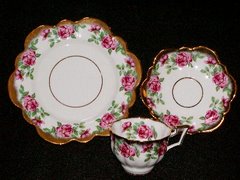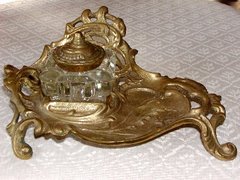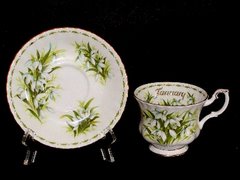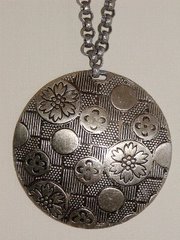
If you’re at all familiar with antique and collectible porcelain, the name Nippon immediately evokes images of beautifully painted porcelain pieces of all types. Richly colored, highly decorated and frequently boasting intricate gilt-work, authentic Nippon pieces are highly collectible and can command prices as impressive as the workmanship.
As seasoned collectors know, the word Nippon is another word for Japan. Back in the mid-1800s, the once secluded Japan, which had closed itself off from the world and hadn’t allowed European visitors since 1683, finally opened its doors to world trade and tourism, which brought a torrent of westerners to this mysterious land. Immediately, highly-skilled Japanese artists began learning and implementing new artistic techniques and forms used in other areas of the world. From this point on, there are many examples of this, some of the most common being Japanese porcelains with English themes. Other countries also benefited from this exchange of ideas, so it's also not uncommon to find Japanese-themed English wares.
You can date some Nippon pieces by the backstamp: those with the backstamp that actually contains the word “Nippon” were manufactured between 1891 and 1921; after this date, the US government ruled that the word “Japan” be used instead. This decision stemmed from the 1890 McKinley Tariff Act, which in part stated that all imported items had to be plainly marked in “legible English words”. The US had decided that “Nippon” was a Japanese word, and therefore had to be replaced for imports.
According to the International Nippon Collectors Club, there are currently a total of 249 known backstamps for Nippon ware. These include the well-known rising sun and M-inside-wreath, as well as a star, maple leaf, globe, flower, pagoda, and geometric shapes, plus lots more.
But before you pay premium price for that piece of Nippon, be aware that there are plenty of fakes on the market. Some faked backstamps are poorly done and rather obvious, but others that were done in more recent years are extremely close to the originals and have fooled even long-time collectors. Other tell-tale signs of a fake are gold decorations that look burnished instead of bright, slightly different mold styles, different interior lid shapes, etc. However, because some of these newer pieces are being made from the original mold patterns, they are being considered reproductions instead of “fakes”. Still, they do not hold the same value as authentic Nippon.
The best way to know what to look for right down to the last detail is to educate yourself. There are several excellent identification and value guide books about Nippon; my favorite is Van Patten’s ABC’s of Collecting Nippon Porcelain. Whenever I go out in search of Nippon, this is the “Nippon Bible” that goes with me. Author Joan Van Patten shares a world of information in this book, which is also filled with spectacular color pictures of hundreds of pieces. One very interesting section has images of old Nippon ads from the early 1900s – you could buy two 3-piece hand-painted Nippon dresser sets with tray, hair receiver and covered puff jar for 45 cents! Another catalogue ad offered a 14-piece chocolate set free with a $3.80 purchase or $3.80 in coupons. Imagine the value of those sets today….
As seasoned collectors know, the word Nippon is another word for Japan. Back in the mid-1800s, the once secluded Japan, which had closed itself off from the world and hadn’t allowed European visitors since 1683, finally opened its doors to world trade and tourism, which brought a torrent of westerners to this mysterious land. Immediately, highly-skilled Japanese artists began learning and implementing new artistic techniques and forms used in other areas of the world. From this point on, there are many examples of this, some of the most common being Japanese porcelains with English themes. Other countries also benefited from this exchange of ideas, so it's also not uncommon to find Japanese-themed English wares.
You can date some Nippon pieces by the backstamp: those with the backstamp that actually contains the word “Nippon” were manufactured between 1891 and 1921; after this date, the US government ruled that the word “Japan” be used instead. This decision stemmed from the 1890 McKinley Tariff Act, which in part stated that all imported items had to be plainly marked in “legible English words”. The US had decided that “Nippon” was a Japanese word, and therefore had to be replaced for imports.
According to the International Nippon Collectors Club, there are currently a total of 249 known backstamps for Nippon ware. These include the well-known rising sun and M-inside-wreath, as well as a star, maple leaf, globe, flower, pagoda, and geometric shapes, plus lots more.
But before you pay premium price for that piece of Nippon, be aware that there are plenty of fakes on the market. Some faked backstamps are poorly done and rather obvious, but others that were done in more recent years are extremely close to the originals and have fooled even long-time collectors. Other tell-tale signs of a fake are gold decorations that look burnished instead of bright, slightly different mold styles, different interior lid shapes, etc. However, because some of these newer pieces are being made from the original mold patterns, they are being considered reproductions instead of “fakes”. Still, they do not hold the same value as authentic Nippon.
The best way to know what to look for right down to the last detail is to educate yourself. There are several excellent identification and value guide books about Nippon; my favorite is Van Patten’s ABC’s of Collecting Nippon Porcelain. Whenever I go out in search of Nippon, this is the “Nippon Bible” that goes with me. Author Joan Van Patten shares a world of information in this book, which is also filled with spectacular color pictures of hundreds of pieces. One very interesting section has images of old Nippon ads from the early 1900s – you could buy two 3-piece hand-painted Nippon dresser sets with tray, hair receiver and covered puff jar for 45 cents! Another catalogue ad offered a 14-piece chocolate set free with a $3.80 purchase or $3.80 in coupons. Imagine the value of those sets today….
Check out Collector's Cottage for a wide selection of beautiful porcelains!




No comments:
Post a Comment